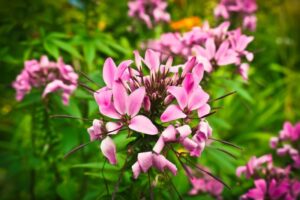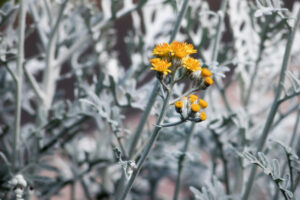In this guide, we’ll explore an array of stunning annual flowers that can transform your garden into a visual masterpiece.
Angelonia
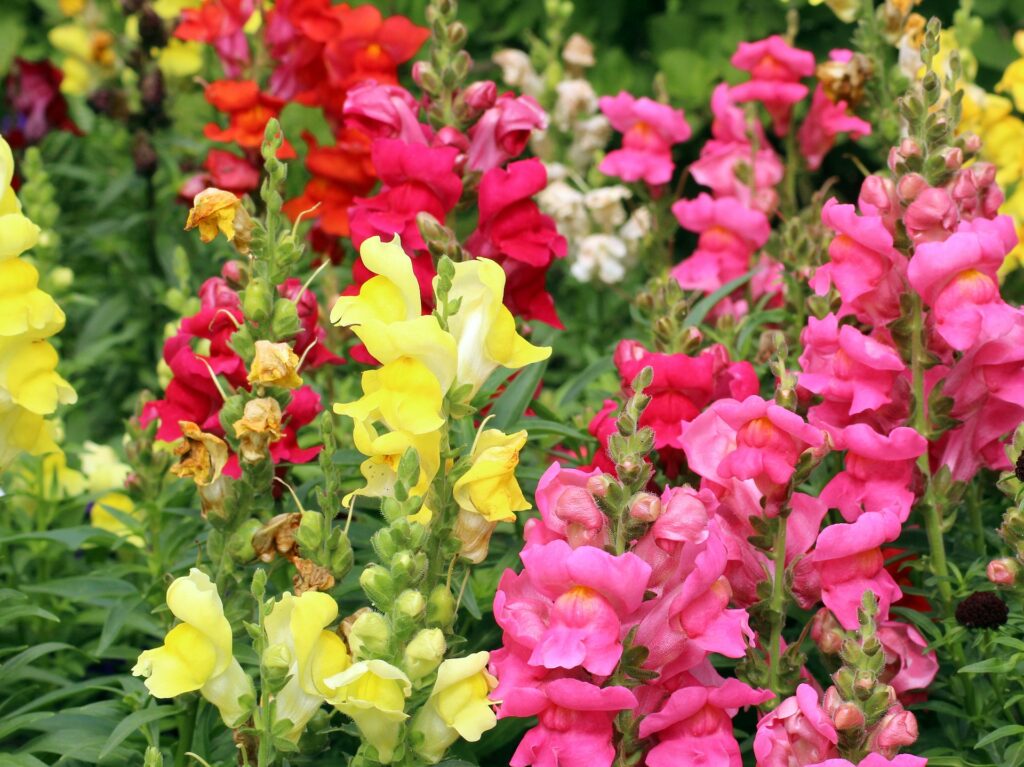
Angelonia, also affectionately known as summer snapdragon, adds an elegant touch to any garden with its tall spires adorned with delicate, trumpet-shaped flowers. Available in shades of purple, pink, and white, these flowering beauties are drought-tolerant, making them a favorite among gardeners who value low-maintenance plants. Angelonia thrives in warm weather, often continuing to bloom until the first frost. Plant them in containers, perennial beds, or as accents in garden borders to create a striking visual effect. Additionally, their sweet fragrance can attract pollinators like bees and butterflies, bringing more life to your outdoor space.
Vinca
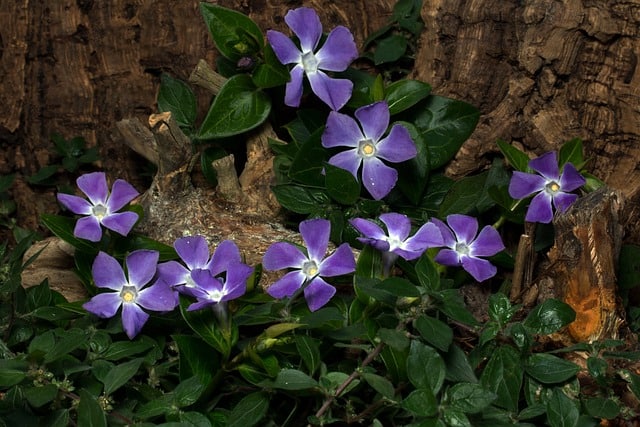
Vinca, or periwinkle, is renowned for its glossy green foliage and vibrant blooms, which come in shades of pink, purple, and white. This hardy annual flourishes in various conditions, including poor soil and full sun to partial shade, making it perfect for beginner gardeners. Vinca is a prolific bloomer, often producing flowers from late spring until frost, requiring minimal care beyond watering during dry spells. Its ability to cascade makes it an excellent choice for hanging baskets and container gardens, where it can spill over the edges, creating stunning displays of color.
Begonia
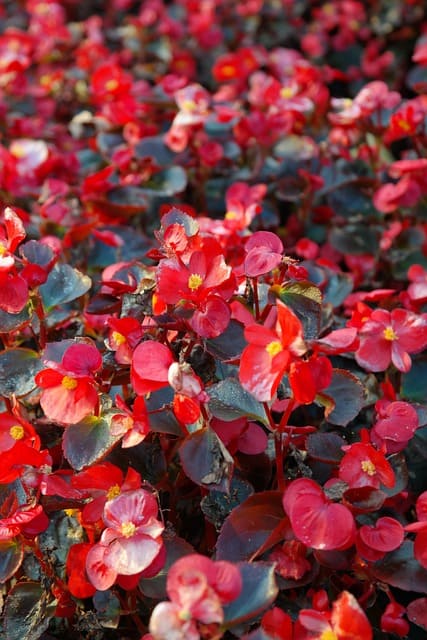
Gifted with a range of colors, shapes, and leaf textures, begonias are a delightful option for any garden. With varieties ranging from the wax begonia, known for its vibrant floral display, to the fibrous-rooted type, begonia plants thrive in partial to full shade. Their colorful blooms can range from soft pastels to vibrant jewel tones, adding a dynamic touch to shaded areas. Begonias are also appreciated for their unique leaf patterns, which can vary considerably. These versatile plants are ideal for borders and as bedding plants, enriching gardens with their lush foliage and bright flowers.
Celosia
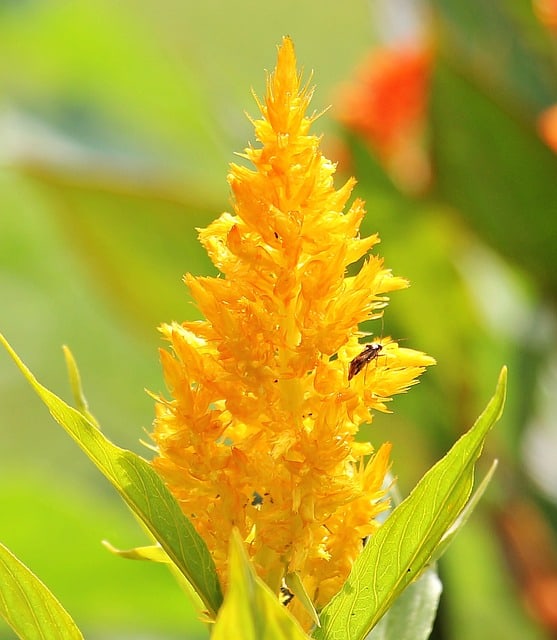
Celosia, or cockscomb, is a standout with its unique, tufted flower heads that resemble a rooster’s comb. Available in vivid shades of red, yellow, and orange, celosia brings a touch of drama and flair to garden beds. This tropical plant thrives in full sun and is appreciated not only for its unusual blooms but also for its exceptional heat tolerance. Celosia flowers can maintain their stunning colors even in the sweltering sun, creating bold visual interest. Additionally, they make excellent cut flowers that can brighten up indoor arrangements, ensuring their vibrant beauty is part of the indoor decor.
Zinnia
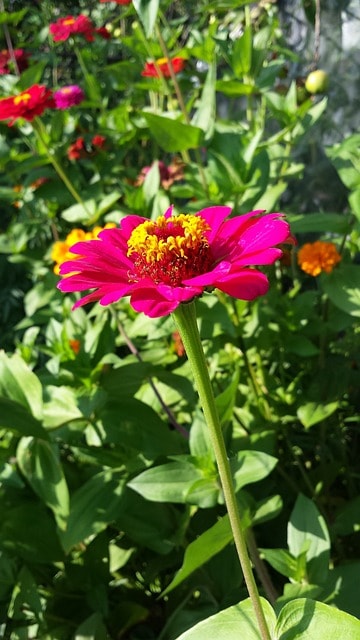
Zinnias are cherished for their bright and cheery flowers that blossom in an array of colors, including orange, pink, red, and yellow. One of the easiest flowers to grow, zinnias are perfect for children and novice gardeners. They thrive best in sunny conditions and well-drained soil, making them ideal for borders or mixed flower gardens. Zinnias also have a remarkable ability to attract butterflies, lending an additional layer of life and movement to gardens. Their resilience against heat and drought means that these flowers will continue to flourish throughout the long summer months, providing consistent splashes of color.
Chrysanthemum

Chrysanthemums, commonly referred to as “mums,” are garden staples that offer an astonishing array of colors and flower forms. Although typically associated with fall, many varieties of chrysanthemums are classed as annuals, blooming from late summer into autumn. These adaptable blooms thrive in full sun and well-drained soil, and they come in numerous styles, from daisy-like to pom-pom blooms. Beyond their beauty, chrysanthemums are known for their longevity as cut flowers, lasting significant time in arrangements. With careful selection, they can provide a colorful transition from summer to fall, extending the gardening season significantly.
Cosmos

Cosmos flowers are the epitome of easygoing beauty, known for their airy presence and vibrant colors. Available in shades of pink, white, and orange, these flowers dance in the gentle breeze, adding a soft yet vibrant touch to any garden. Cosmos thrive in sunny locations and poor soils, making them perfect companions for xeriscaping or low-maintenance gardens. They not only provide visual appeal but also serve as an attraction for bees and butterflies, enhancing the biodiversity of your garden. Additionally, cosmos make excellent cut flowers, bringing their charm indoors.
Cornflower
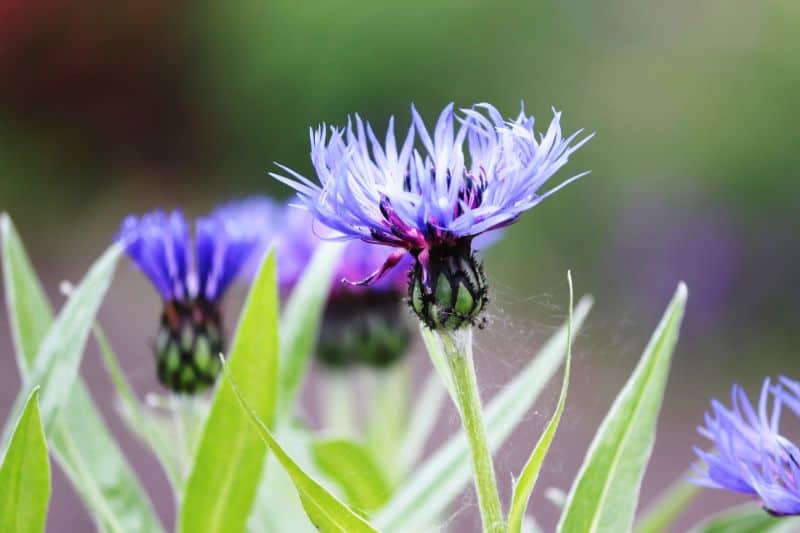
Cornflowers, or bachelor’s buttons, are charismatic blooms that capture attention with their striking blue and lavender petals. Easy to grow, these flowers thrive in sunny spots and can adapt to various soil types. Cornflowers are not just limited to blue; they also come in pink, white, and purple varieties, making them versatile for many garden schemes. With their charming appearance and ability to self-seed, they often pop up in unexpected places, adding a whimsical element to garden designs. Additionally, the flowers are edible, making them excellent for garnishing dishes or enhancing salads with a pop of color.
Dahlias
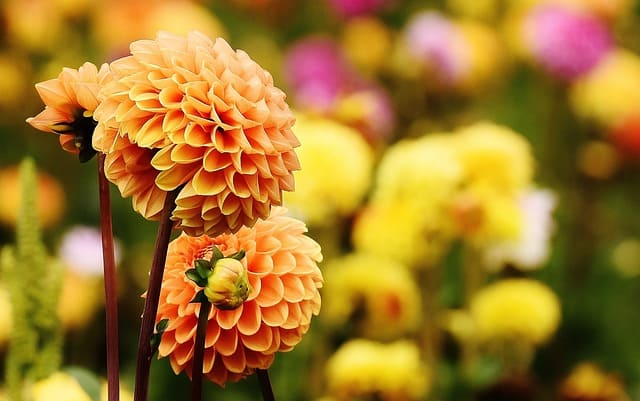
Dahlias are often considered the crown jewels of the garden thanks to their intricate flower forms and a vast range of colors. They vary from small, pom-pom types to large, dinner-plate blooms that can be truly showstopping. Dahlias thrive best in bright sun and appreciate rich, well-drained soil. These flowers require a bit more care, particularly in terms of watering and staking, but the efforts result in stunning displays. Their diversity makes them a popular choice for cutting gardens, where they can be enjoyed indoors or used in floral arrangements, making them a favorite for many gardeners.
Nasturtium
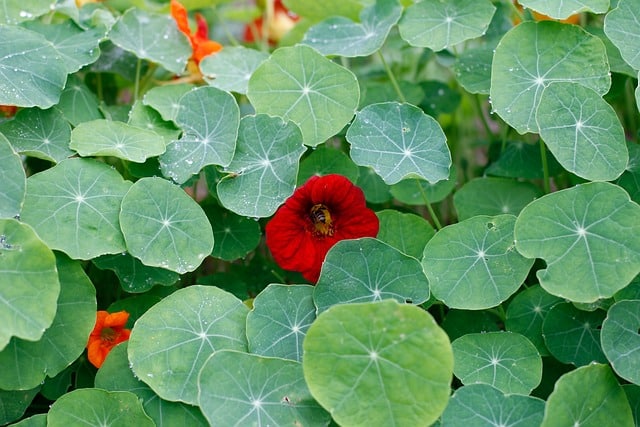
Nasturtiums are not only beautiful but also incredibly versatile in the garden. With vibrant flowers in reds, yellows, and oranges, these annuals are renowned for their impressive ability to attract pollinators. Both the leaves and flowers are edible, making them a unique addition to salads and garnishes. Nasturtiums thrive in poor soil, which allows them to produce abundant blooms, creating a cheerful garden atmosphere. Their ability to trail makes them a perfect candidate for hanging baskets or spilling over the sides of containers, adding a touch of whimsy to your outdoor spaces.
Geraniums
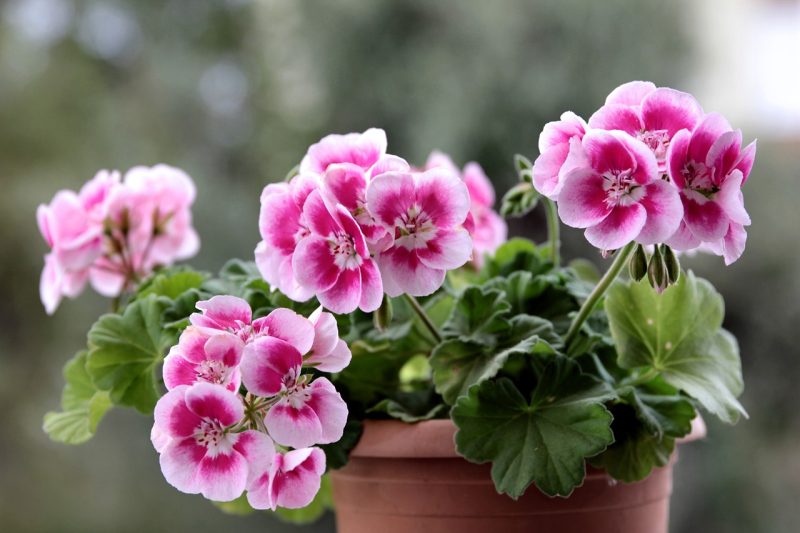
Geraniums are staples in many gardens and landscapes due to their wide-reaching adaptability and array of vibrant colors. Available in various sizes and forms, geraniums can thrive in post-summer sun, creating clusters of rich foliage and blooms. These tough flowers can survive in a variety of conditions, making them suitable for window boxes, containers, or garden beds. Not only do they add a splash of color, but geraniums also have fragrant leaves that emit delightful scents when touched, enhancing the sensory experience of any garden space.
Calendula
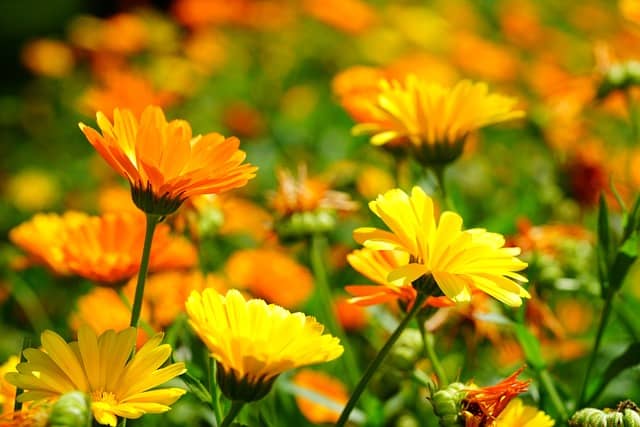
Calendula, or pot marigold, is celebrated for its bright orange and yellow blooms that are perfect for cheerful garden displays. Known for their cheerful disposition, these flowers thrive in full sun and pleasantly tolerate cooler temperatures. Calendula’s edible flowers can be harvested and used in salads or for culinary decoration, adding color to dishes. Additionally, they are known to possess medicinal properties and have been used in traditional remedies for their soothing qualities. Planting calendula can enhance both the beauty and utility of your garden.
Stock
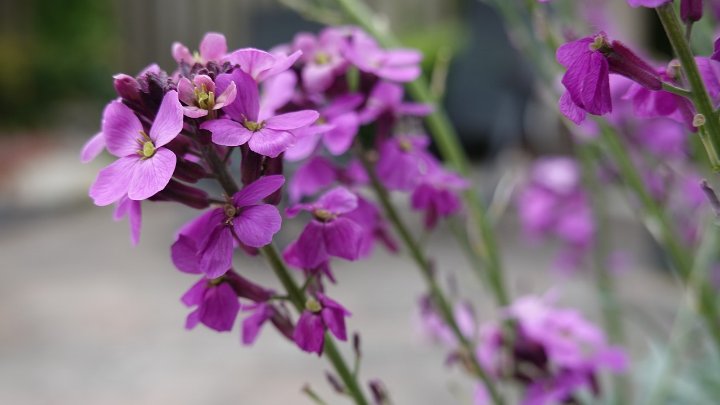
Stock flowers are beloved for their delightful fragrance and lush, colorful blooms. Available in an array of vibrant hues such as lavender, pink, and white, stock not only adds visual appeal but also uplifts garden scents. These flowers prefer cooler climates and are perfect for early spring or fall plantings. Their tall spikes of tightly clustered blooms make them an excellent choice for adding height to flower beds or cut arrangements. The versatility of stock blossoms makes them a treasured favorite among florists and gardeners alike.
Impatiens
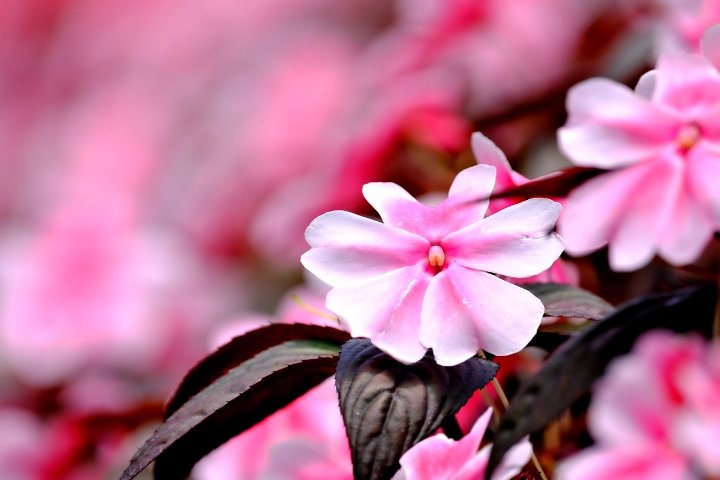
Impatiens are a classic choice for shady areas, flourishing effortlessly where sunlight is limited. They come in various colors, including soft pastels and vibrant reds and pinks. With their glossy foliage and continuous blooms throughout the summer, impatiens are ideal for filling shaded corners, hanging baskets, or as edging plants. Their low-growing habit makes them perfect for ground cover, bringing life and color to otherwise dull areas. This tender perennial is often planted as an annual in cooler climates, ensuring a burst of color in gardens year after year.
Primrose
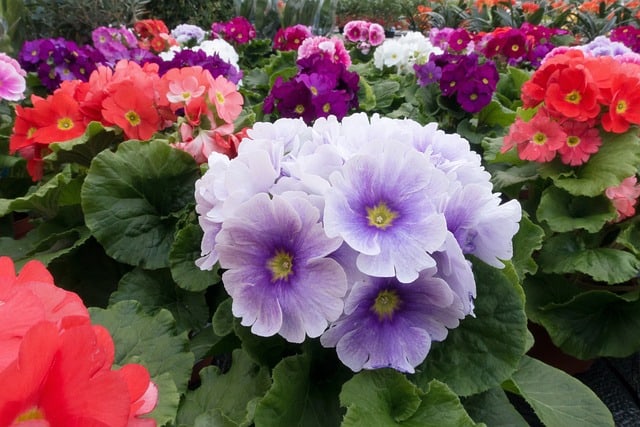
Primroses are charming early bloomers that bring a splash of color to gardens coming out of winter. Available in a myriad of hues, from subtle pastels to vibrant reds, these perennial favorites thrive in cool weather and are often among the first flowers to bloom in spring. Primroses prefer partial shade and moist, well-drained soil, making them excellent candidates for the edges of garden beds and, particularly, for woodland gardens. Their delicate flowers and rich green foliage add a gentle beauty to gardens as they awaken after the winter months.
Larkspur
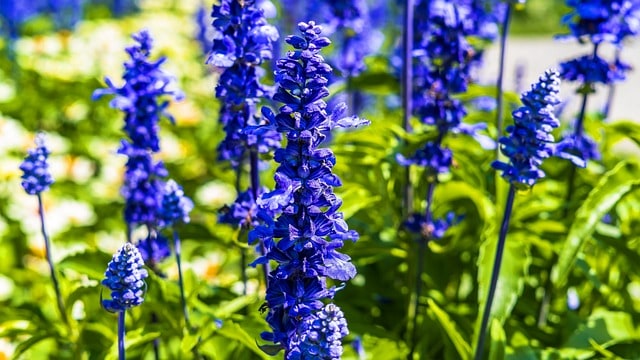
Larkspur is a delightful plant known for its tall spikes adorned with intricate blooms. Available in shades of blue, white, purple, and pink, larkspur can infuse gardens with an ethereal quality. While it’s loved for its beauty, it requires a bit of care, including support to keep its tall stems upright and protection from extreme heat. Larkspur thrives in cooler temperatures and prefers sunny locations. Its distinctive shape and elegant appearance make it a favored choice for borders and cottage gardens, drawing admiration from all who pass.
Sweet Pea
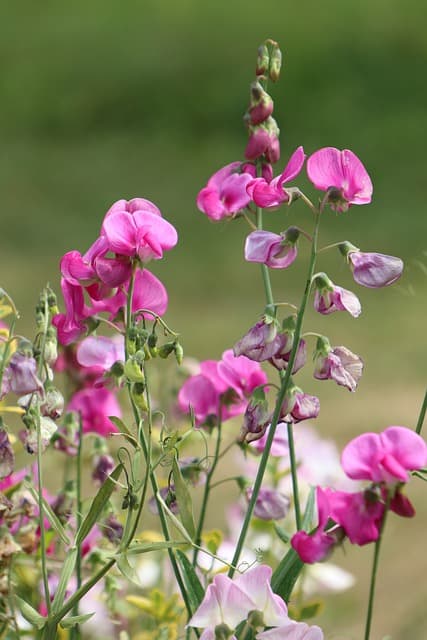
Sweet peas are esteemed not just for their charming blossoms in various colors but also for their intoxicating fragrance. These climbing plants are perfect for trellises, fences, or containers, adding vertical interest and heavenly scents to outdoor spaces. Available in shades of pastel pinks, purples, and whites, sweet peas create a romantic atmosphere in the garden. They flourish in cool weather, making them a favorite in spring and fall gardens. Their ability to attract pollinators adds another layer of beauty, as bees and butterflies enjoy the flowers’ nectar.
Marigold
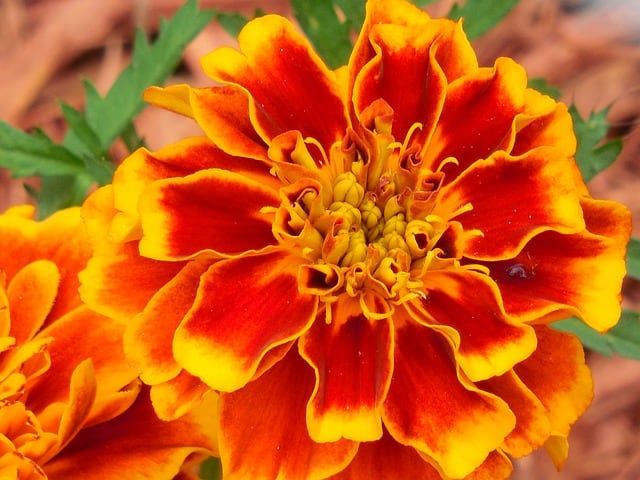
Marigolds are a gardener’s delight, offering cheerful yellow, orange, and red blooms that radiate warmth. Known for their insect-repelling properties, particularly against nematodes and aphids, marigolds are excellent companions in vegetable gardens. They thrive in full sun and are easy to grow from seed, making them perfect for novice gardeners. Marigolds have a long blooming season, often extending from late spring until the frost, consistently brightening up garden beds and borders. Their resilience and color make them a go-to choice for reliable garden displays.
African Daisy
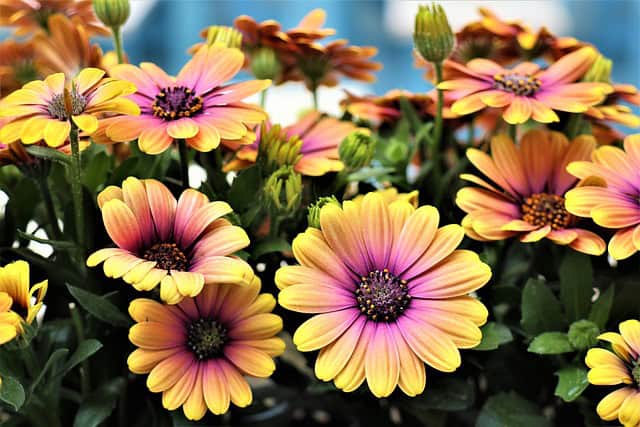
African daisies, or osteospermums, feature vivid and unconventional colors that can bring a unique flair to your garden. These flowers display variations in shades, including whites, pinks, lavenders, and even deep cerulean. They prefer full sun and well-draining soil, thriving in warmer temperatures. Their daisy-like form paired with the ability to bloom profusely throughout the summer months makes them an eye-catching choice for borders or container gardens. African daisies can provide an exotic touch and add an eclectic feel to garden aesthetics.
Pansies
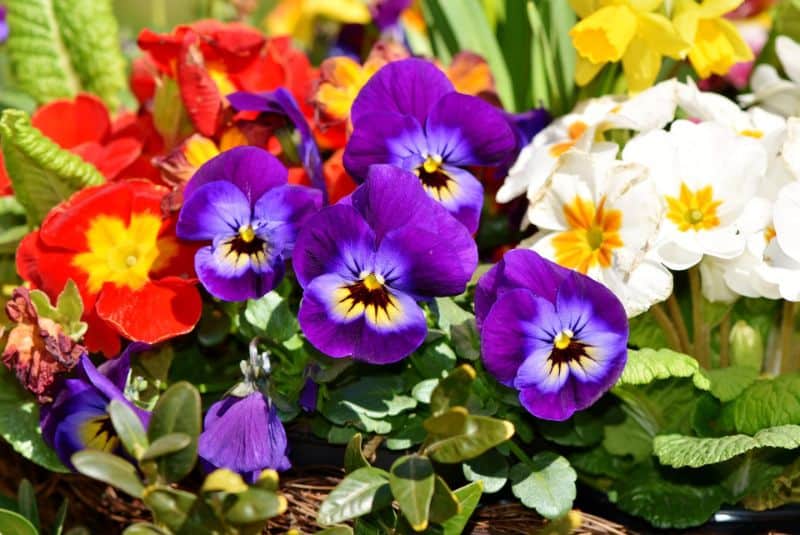
Pansies are beloved for their vast array of colors and charming “faces” which can evoke a sense of joy in any garden setting. These hearty annuals thrive in cooler temperatures, making them ideal for spring and fall displays. Additionally, pansies are remarkable for their adaptability and can often withstand light frosts. Their flexibility allows them to be incorporated into borders, flower beds, or containers. The delightful patterns and variety of colors ensure that pansies bring cheer and vibrancy wherever they are planted.
Sweet Alyssum

Sweet alyssum is a charming ground cover known for its fragrant, tiny blooms that form dense blocks of color. Available predominantly in white, pink, and lavender hues, this annual flourishes in full sun to partial shade. Its cascading habit makes it ideal for containers or hanging baskets, where it can spill over edges while releasing its delightful scent. Sweet alyssum is often used as a filler in flower beds, softening transitions between planted areas. Moreover, its attraction to pollinators enhances ecological benefits in gardens, supporting local bee populations.
Petunias
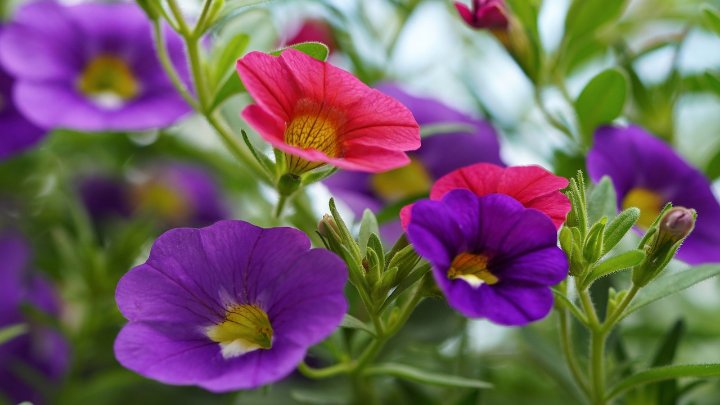
Petunias are renowned for their colorful, trumpet-shaped flowers that can brighten any garden. Available in a spectrum of colors and patterns, these versatile blooms thrive in sunny locations and are typically resilient against both heat and drought. They can be grown in garden beds, containers, or hanging baskets, where their cascading blooms create stunning effects. Petunias can thrive all summer long with proper care, often resulting in a breathtaking display that attracts butterflies and hummingbirds to your garden.
Dianthus

Dianthus, commonly known as pinks or carnations, offers a unique texture and scent in the garden. These charming plants flaunt fringed petals and a vast color palette, including shades of pink, white, and purple. The hardy nature of dianthus allows it to thrive in both sunny and partially shaded locations, making it adaptable for various garden settings. Their fragrant blooms are excellent for cutting gardens; they can easily create lovely bouquets. The compact habit of dianthus makes them perfect for borders or edging, drawing attention with their colorful blooms.
Pentas

Pentas flowers are a tropical delight known for their bright star-shaped blooms that are exceptionally attractive to butterflies and hummingbirds. Available in various colors like red, pink, and white, pentas thrive in sunny locations, blooming profusely throughout the summer months. They are low-maintenance and drought-tolerant, making them ideal for gardens that require minimal upkeep. Perfect for mixed borders or containers, pentas create lively visual interest and foster biodiversity in your outdoor spaces.
Ranunculus

Ranunculus flowers are celebrated for their lush, multi-layered petals, resembling small roses. Available in a stunning variety of colors, including vivid reds, soft pinks, and bright yellows, these flowers thrive in cooler climates and are often planted as early spring annuals. They require well-drained soil and can be grown in full sun or partial shade. Ranunculus adds drama to flower arrangements with their full blooms, making them a favorite among florists. Plant them in clusters for striking displays or among other flowers for added texture.
Calibrachoas
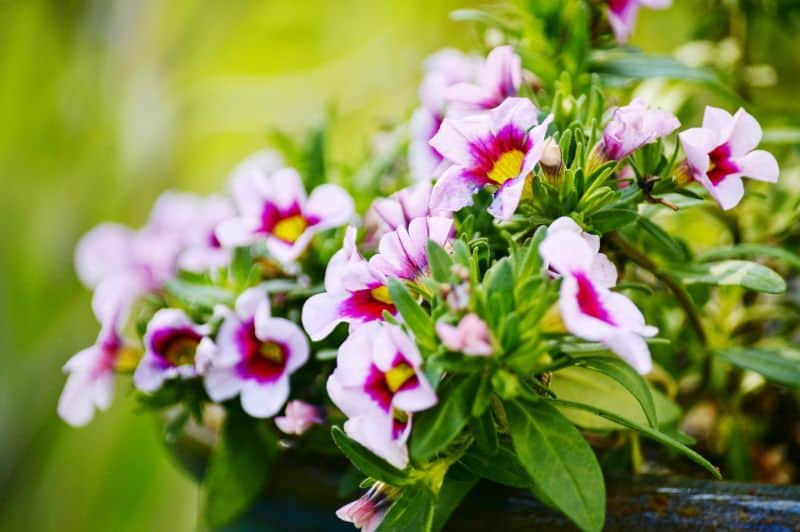
Calibrachoas, often known as “million bells,” are renowned for their stunning profusion of tiny flowers that resemble miniature petunias. Available in a vast array of colors, they are perfect for hanging baskets, containers, or garden beds, where their trailing habit can create beautiful cascades of blooms. Calibrachoas thrive in full sun and require minimal care, making them an excellent choice for busy gardeners or those new to planting. Their vibrant flowers often bloom from spring to fall, providing endless color throughout the growing season.
Snapdragons
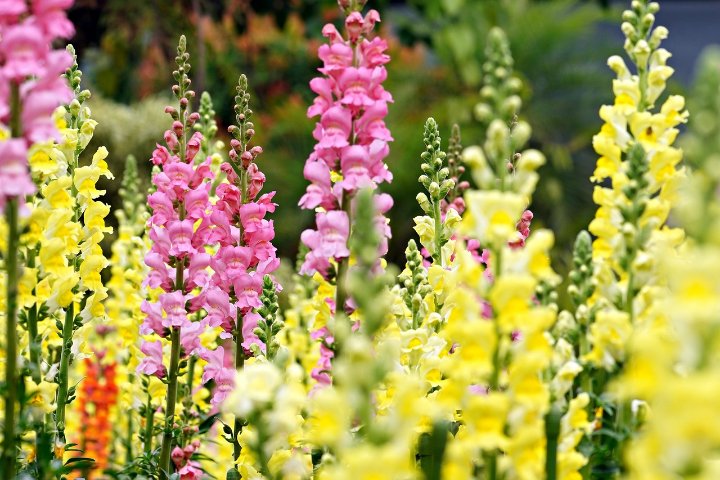
Snapdragons are enchanting flowers characterized by their unique, dragon-shaped blooms that bring whimsical charm to any garden. Available in a variety of vibrant colors, these flowers thrive in cooler weather and prefer full sun to partial shade. With their tall, upright shape, snapdragons add height and texture to flower beds and mixed borders. They are also fantastic cut flowers, lasting long after being harvested. Their ability to attract bees and butterflies only adds to their allure as a charming garden staple.
Sunflower

Sunflowers are perhaps the most iconic of all annual flowers, celebrated for their towering height and bright yellow blooms. They thrive in full sun, reaching for the sky and bringing cheer to gardens and landscapes alike. Sunflowers are remarkably easy to grow from seed and are known for their ability to adapt to various soil conditions. Their large flower heads not only create a stunning visual backdrop but also attract pollinators. Sunflower seeds are a bonus, providing nourishment for birds and gardeners alike, turning blooms into a delightful ecosystem.
Globe Amaranth
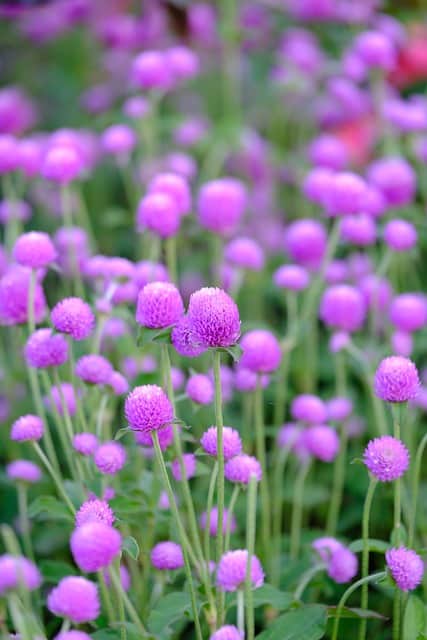
Globe amaranth flowers are unique, globe-shaped clusters that provide long-lasting color in the garden. Available in pink, purple, and white, these flowers are incredibly drought-tolerant and thrive in full sun. Globe amaranth’s hardy structure allows it to hold its shapes and colors even after being cut, making it a favorite for dried flower arrangements. This annual is easy to grow from seed, requiring minimal care while bringing vibrant textures to mixed borders or as accents in flower beds.
Cape Daisy
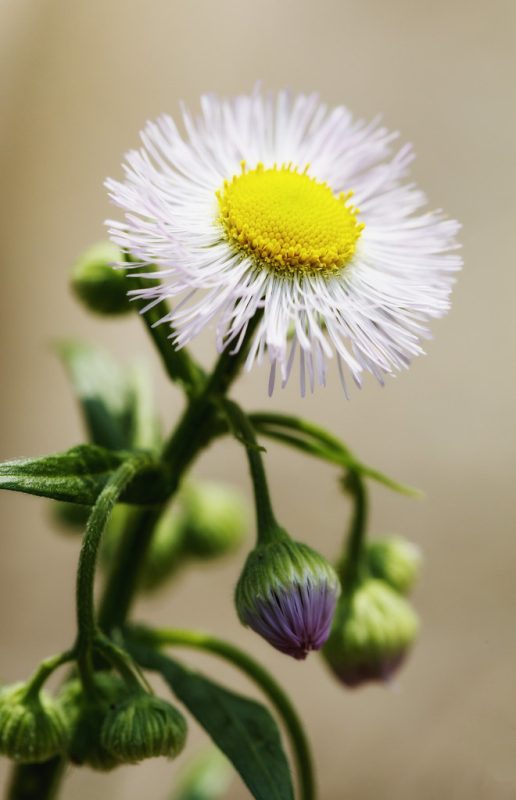
Cape daisies, or osteospermum, add a touch of the exotic with their vibrant, daisy-like flowers that can brighten any garden setting. They are available in a range of colors, including lavender, yellow, and even bicolored blooms. Thriving in full sun, cape daisies can adapt to various soil conditions and are appreciated for their resilience in warmer climates. These flowers are not merely decorative; they also attract a wealth of pollinators, enriching garden biodiversity. Their vibrant colors and unique shape provide an eye-catching display across flower beds and borders.
Moss Rose
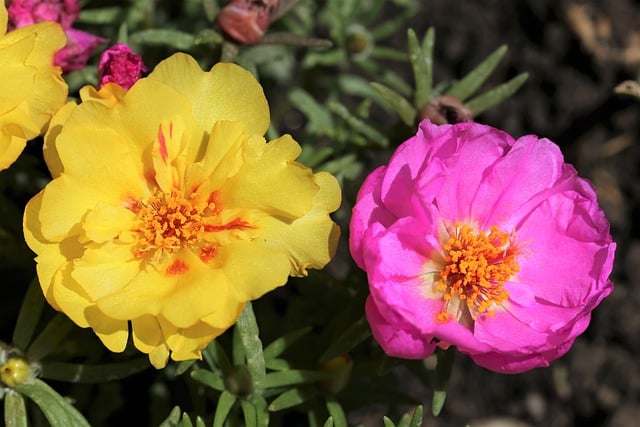
Moss rose, or portulaca, is adored for its succulent foliage and bright, vibrant flowers that open and close with the sun. Available in multiple colors, including pinks, yellows, and whites, these hardy flowers thrive in poor, sandy soils and are drought-tolerant, making them perfect for sunny spots and rock gardens. Their low-growing habit makes them ideal as ground cover, spilling over edges and creating colorful carpets of blooms. Moss rose requires minimal care, making it an excellent choice for busy gardeners or those seeking to add vibrant color with little maintenance.
Satin Flower (Godetia)
Satin flowers, or godetia, are known for their delicate, satin-like petals that come in numerous soft colors such as pink, white, and lavender. Thriving in cooler weather, these flowers add a romantic touch to any garden. Satin flowers do best in well-drained soil and full sun, blooming profusely in spring and early summer. Their graceful appearance makes them ideal for cutting gardens, where their beauty can be showcased indoors. Globally, they remain a favorite for creating soft, romantic arrangements that captivate the senses.




